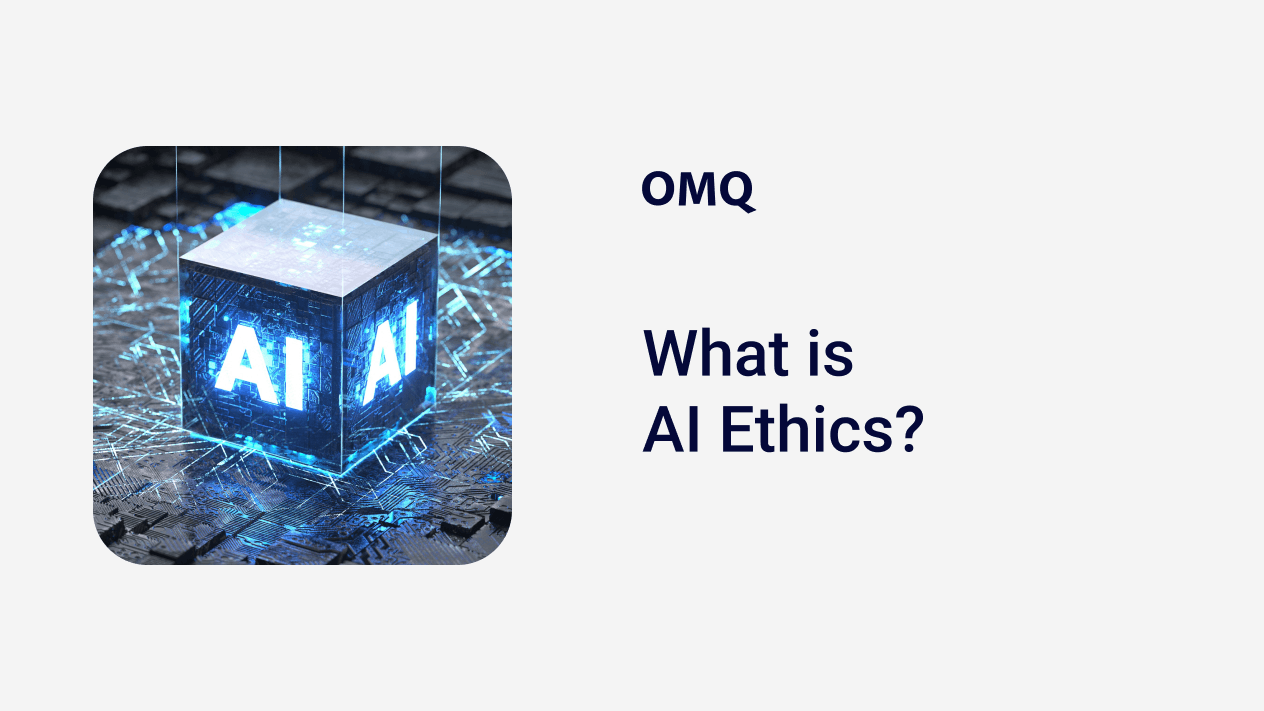Artificial Intelligence
8 Myths about AI in Customer Service
Discover the most common myths about AI in customer service and learn how these technologies actually work and their impact on customer service.
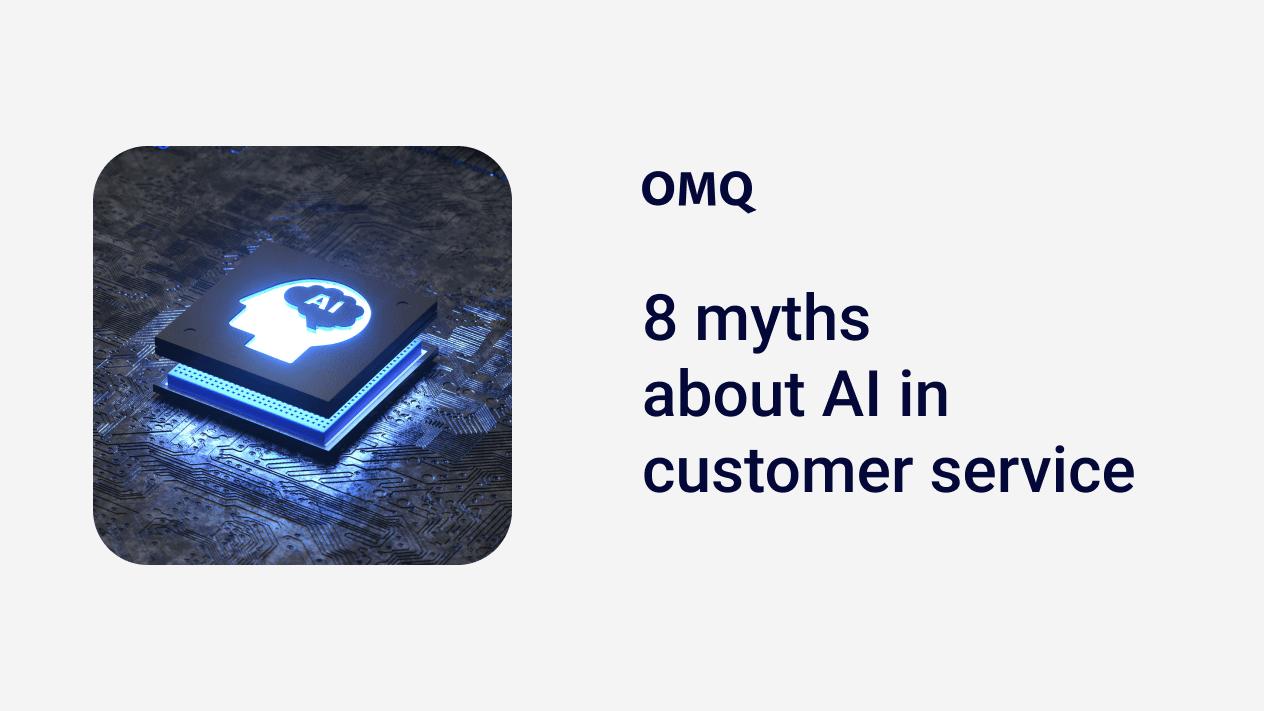
If you believe movies and dark scenarios from books (especially in the science fiction genre), then artificial intelligence seems to be planning a takeover to subdue us humans. Superintelligence - huge dangers - dystopian proportions.
But of course, such myths do not only exist in the fictional realm. There are also many statements and fears in everyday life that cannot be ignored.
In this article, we show why AI is an enrichment for customer service instead of a danger. We debunk 8 myths about the use of artificial intelligence in customer service.
- 1AI completely replaces human employees
- 2AI perfectly understands human emotions
- 3All chatbots are equally powerful
- 4AI can solve all customer requests
- 5The use of AI leads to impersonal service
- 6AI in customer service is only for large companies
- 7The implementation of AI is expensive and complicated
- 8AI is only useful for chatbots
A widespread myth in the world of artificial intelligence is the assumption that AI will completely replace human employees. In reality, AI is merely seen as support.
In customer service, for example, AI can efficiently handle routine inquiries, allowing human employees to focus on more complex and demanding tasks. These tasks often require empathy, creativity, and critical thinking – skills that machines cannot replicate.
In addition, the integration of AI opens up new opportunities for innovation and even creates new jobs in areas such as data analysis, AI development and maintenance, and training employees in the use of new technologies.
Companies benefit from a hybrid workforce where machines take over repetitive tasks and people can use their unique strengths. This collaboration can lead to greater efficiency without losing the human touch that is crucial for many customer interactions.
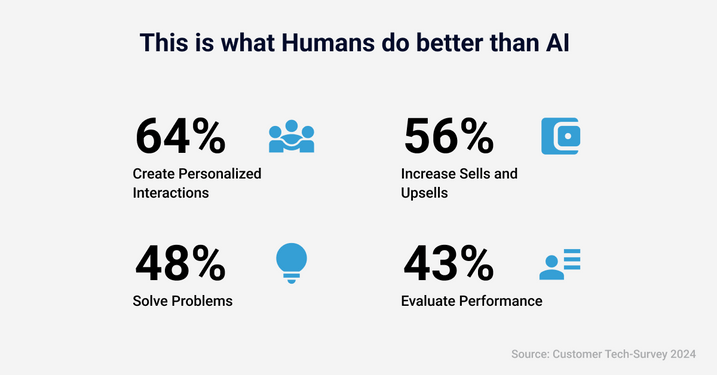
Other skills that people can do much better than machines.
Another myth is that AI can perfectly understand and respond to human emotions. AI actually cannot do this, even though there have already been huge advances in so-called sentiment analysis and natural language processing. The ability of machines to capture emotional nuances and react appropriately to them is therefore limited.
What is sentiment analysis?
Sentiment analysis in AI refers to a system’s ability to detect and categorize the emotions or attitudes in a text, for example as positive, negative or neutral. It is often used to analyze opinions in customer reviews, social media or other text sources and helps to understand moods or trends.
Human emotions are complex and multifaceted and they are influenced by a variety of factors. On the one hand, e.g. cultural influences or personal experiences and individual handling of different situations. In addition, emotions are not only shared through words, but also through tone of voice, body language and facial expressions. Although these do not exist in chat, this point refers to AI in general and not exclusively to AI in customer service.
Subtle cues, such as gestures and facial expressions, are difficult for machines to interpret. Sarcastic or ironic remarks are often not even recognized by fellow human beings. While AI systems can recognize patterns in data and identify basic emotions such as joy or anger, they lack a deeper understanding of the context and the subtle differences between similar expressions of emotion.
Another aspect is the individuality of human emotions. What may be frustrating for one person may be of little consequence to another. Employees recognize these individual differences and know how to deal with them.
Although AI systems can be continuously improved through machine learning and are able to process large amounts of data to make predictions or recognize patterns, emotional intelligence remains an area where humans have a clear advantage and will continue to do so. The capacity for empathy is deeply rooted in the human experience.
Overall, this myth about the perfection of AI in understanding human emotions shows a discrepancy between expectations of technological capabilities and their actual limitations.
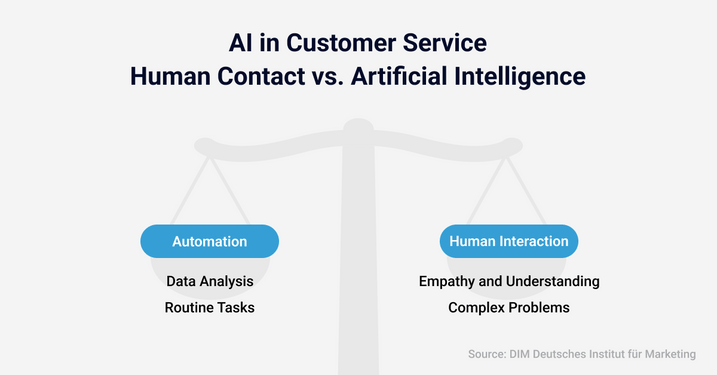
The right balance.
To assume that all chatbots are equally powerful is wrong. There are different types of chatbots that differ in their complexity and functionality. Rule-based chatbots, for example, as the name suggests, follow rules and can therefore only answer basic questions.
On the other hand, there are more advanced chatbots based on complex machine learning algorithms. These bots are able to learn from interactions and improve their responses over time. They can engage in contextual conversations and make personalized recommendations by accessing extensive databases and analyzing user preferences.
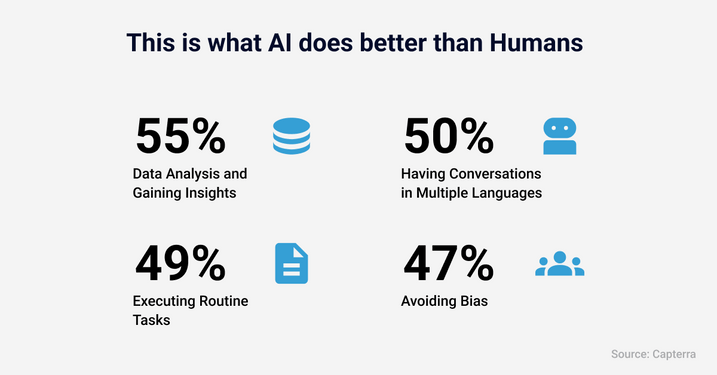
What the AI is very good at.
The performance of a chatbot depends heavily on the goals for which it was developed, as well as the resources invested in its programming. Companies need to carefully consider what level of complexity they need to meet their specific requirements.
A simple FAQ bot may be sufficient for a small business, while a large company may need a sophisticated AI-powered bot to efficiently handle a variety of customer inquiries. Ultimately, this myth about the equality of chatbots shows an underestimation of technological diversity and the strategic considerations required when choosing the right tool for the job.
While AI is a great help in many ways and seems to be omniscient, it still cannot solve all customer problems. This misconception overestimates the current capabilities of AI systems. Inquiries that are too complex should always be resolved by employees.
As already mentioned, AI can support support, especially with routine tasks, but in many cases human judgment and empathy are the be-all and end-all. In addition, many customer problems are unique and require customized solutions that go beyond standardized answers.
Human employees can better understand the context of a problem and develop creative solutions that a machine cannot offer.
The use of artificial intelligence in customer service does not necessarily lead to impersonal service. On the contrary, AI can even provide a personalized experience based on the specific needs and preferences of each individual customer. Thanks to advanced algorithms, AI systems can analyze data to provide customized recommendations and proactive solutions. This makes the customer feel well looked after without having to wait long or navigate through multiple levels of staff.
In addition, AI can make service more efficient and accessible by being available around the clock. In times when quick answers are needed, customers can get instant help through chatbots or automated systems that can quickly help them with simple requests or common problems. This does not mean that the service is less personal, but that it becomes scalable in a way that actually benefits customers - they no longer have to wait for an available employee, but can find solutions directly and without delay.
The use of AI is not just for large companies. AI systems are now becoming increasingly accessible and adaptable. There are many AI tools and AI platforms available that tailor their offerings to the needs of small and medium-sized businesses. These solutions are usually inexpensive and easy to implement, so that even smaller companies can benefit from the advantages of automation.
In addition, the integration of AI in customer service offers smaller companies the opportunity to keep up with larger competitors by offering fast and accurate customer care. This can be particularly crucial in highly competitive markets where customer satisfaction is a key success factor. Ultimately, AI in customer service can serve as a strategic tool for companies of all sizes to remain competitive and sustainably strengthen their customer relationships.
Many mistakenly believe that implementing AI systems is expensive and complicated. However, there are now many cost-effective solutions and platforms that are easy to integrate - even without in-depth technical knowledge.
In addition, many providers already have ready-made, customizable AI tools that can be implemented quickly. Instead of developing a bespoke solution from scratch, businesses can access existing, proven systems that are up and running in a matter of weeks or even days. This means that implementation is not only relatively easy, but can also deliver a high return on investment by optimizing customer service while reducing operating costs. In many cases, investing in AI is a long-term saving that far outweighs the initial cost.
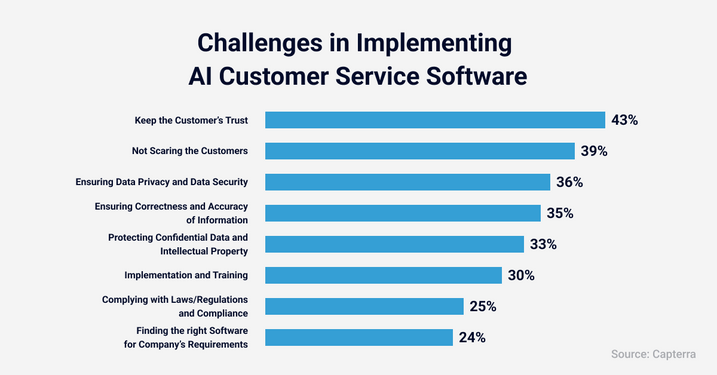
Some challenges that could arise according to the Customer Tech Survey.
When people think of AI, they often immediately think of chatbots like ChatGPT or Google Gemini. While these applications are the best known, AI has far more to offer, especially in customer service. It can be integrated into numerous tools that go beyond the classic chatbot. A good example of this is linking AI with a company’s FAQ page. Here, AI can not only provide standardized answers, but also make context-based, intelligent recommendations that help users solve their problems. When a customer asks a question that is not directly answered in the FAQs, AI can use machine learning to identify what information might help the user and present it dynamically.
Another example of the use of AI is integration into a company’s email inbox. AI can help categorize incoming messages, compose automatic replies, or even filter out high-priority emails and forward them directly to the appropriate employees. This not only reduces the workload of the employees, but also increases the company’s reaction speed. AI can also analyze the tone and intent of emails to ensure that the response is always delivered at the right time and in the right form.
Such applications show that AI can add value in many different areas of everyday business life - be it through the automation of routine tasks, through improving the customer experience or through increasing efficiency. The possibilities are almost limitless and go far beyond what is often associated with artificial intelligence.
Conclusion
In conclusion, the notion of artificial intelligence as a threat or as pure sci-fi fantasy is far from reality. AI offers tremendous opportunities for businesses, particularly in customer service, by taking over routine tasks, increasing efficiency, and at the same time giving human employees space for more creative and demanding activities. The 8 debunked myths illustrate the importance of distinguishing between technological progress and exaggerated expectations.
AI is not a substitute for humans, but a valuable tool that complements human strengths. It helps companies of all sizes to optimize customer service and create personalized experiences - without losing the human touch. Instead of seeing technology as a threat, we should see it as an asset that transforms the world of work and sustainably improves customer relationships. When companies use AI wisely, they can not only increase their efficiency, but also secure their competitiveness in the long term.

